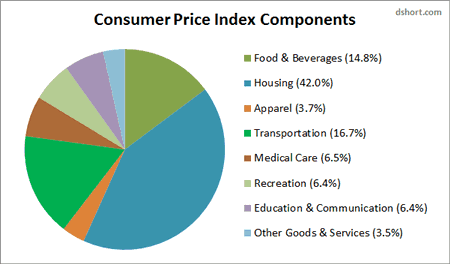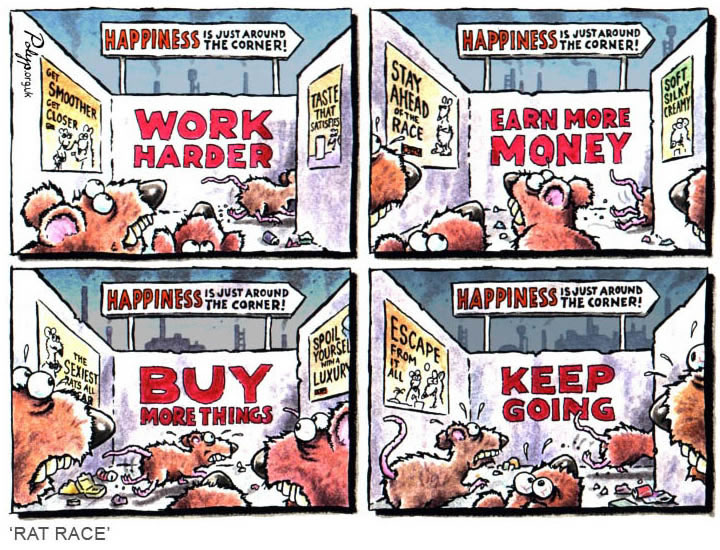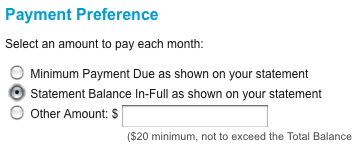 I recently finished re-reading the updated edition of the popular book The 4-Hour Workweek by Tim Ferriss. I read it quickly when it first came out in 2007 or so, but this time I think was more ready for the message.
I recently finished re-reading the updated edition of the popular book The 4-Hour Workweek by Tim Ferriss. I read it quickly when it first came out in 2007 or so, but this time I think was more ready for the message.
In the last lifestyle book I read, The Art of Non-Conformity, the goal was to find a convergence between your work and your passion. Ferriss goes the opposite way and clearly separates them. Forget “dream job”, matching your true dreams with a job is too hard for most people. Instead, the ideal job is the one that gives you enough money in exchange for the least amount of time. Now you can pursue your dreams.
This is a critical difference. The overarching goal is now to create automated income and free up time.
Highlights & Notes
Motivation and getting started. The timing will never be just right. Just go for it and correct course as needed. The price of failure is often low, while the price of never trying is often high.
Creating your own income. Includes various ideas on starting your own business with the goal of high income and low time commitment. Resell someone else’s products. License a product. Create your own product. Physical objects are okay, but informational products are even better if you can pull it off. Ferriss himself made his first big money by selling nutritional supplements using ads in magazines. (Not exactly a product to be proud of, which I guess fits into his point above. Good thing he’s great at marketing.)
Shifting from 9-5. Let’s say you don’t want to quit your current job yet. The goal is again to separate work from time. If you can do the work that you spread out over 40 cubicle hours in just 20 hours at home, that will create a lot of free time for you to start that side business. For some, this may be enough to start pursuing your other dreams. Detailed instructions on how to negotiate a remote-working arrangement, starting with a two-week trial and reaching a full-time remote situation.
Time management. As said elsewhere, it’s critical to stop wasting your time and energy on things are really aren’t important. Being busy is not necessarily the same as being productive. Cut out interruptions, stop time-wasters like checking e-mail all the time, and batch tasks together.
Have others work for you. Hire virtual assistants from India. They aren’t just drones, if you teach them a system and allow them to use their own discretion, they can really remove a lot of your workload. Outsource whatever you can, remember that you’re not trying just to maximize profit.
What if I actually succeed? How will you spend your time? Instead of the potentially vague pursuit of “happiness”, he asks why not simply pursue what excites you and makes you feel alive. Ferriss enjoys “mini-retirements” where he does long-term international traveling. People also tend to find satisfaction with tasks that require continuously learning and/or include helping others.
Recap
Even though sometimes I have the urge to go against popular opinion, especially when the author’s primary skill seems to be marketing, I have to say that I really enjoyed reading this book. For me, it provided a good balance of big picture theory and practical advice. As with any book of this type, 99% of the readers won’t be able to actually attain a 4-hour workweek. But in return for ten bucks and a few nights of reading, I definitely felt I got good value.
I would recommend anyone who has the entrepreneurial urge to read this book, and I’m keeping my copy around because the included companies and links are useful for future reference.


 It’s the Season of Giving, so why not give away the things you don’t need anymore? I think right now is even better than “Spring cleaning”. We just spent a chunk of this past weekend making a box of stuff to give to various charities. Here’s why, along with some tips:
It’s the Season of Giving, so why not give away the things you don’t need anymore? I think right now is even better than “Spring cleaning”. We just spent a chunk of this past weekend making a box of stuff to give to various charities. Here’s why, along with some tips:
 Another topic I’ve been interested in is the 100 Thing Challenge started by Dave Bruno. If you read a lot of simplicity blogs you’ve probably already heard of it, but it’s a pretty simple idea: Live with only 100 personal possessions. You can always quibble about what is a “thing” – a pair of socks, or all your socks? Your nail clippers, or all toiletries? But you get the basic idea.
Another topic I’ve been interested in is the 100 Thing Challenge started by Dave Bruno. If you read a lot of simplicity blogs you’ve probably already heard of it, but it’s a pretty simple idea: Live with only 100 personal possessions. You can always quibble about what is a “thing” – a pair of socks, or all your socks? Your nail clippers, or all toiletries? But you get the basic idea.
 Meet Bill and Jan. They are my imaginary couple that loves putting their personal finances on auto-pilot. They don’t worry about bill due dates, they never visit the bank, and only check their balances online once a month if there are no e-mail alerts sent to them. (Apparently they also don’t have lips or eyes, so it works well for them…) Let’s take a look at how they do it!
Meet Bill and Jan. They are my imaginary couple that loves putting their personal finances on auto-pilot. They don’t worry about bill due dates, they never visit the bank, and only check their balances online once a month if there are no e-mail alerts sent to them. (Apparently they also don’t have lips or eyes, so it works well for them…) Let’s take a look at how they do it!

 After a busy long weekend*, I am now a PADI Open Water “certified diver”. It was nice to check off a “To-Do Before You Die” item, although it did cost nearly $500 if you include all the related costs. The cool thing was that while talking with the dive shop folks, I learned that they needed some website help, and they were willing to pay me with some free dives/gear in exchange. Barter! This was interesting, because diving is a very expensive hobby. I was mainly looking to dive the Great Barrier Reef someday, but now I might be able to dive even more than that.
After a busy long weekend*, I am now a PADI Open Water “certified diver”. It was nice to check off a “To-Do Before You Die” item, although it did cost nearly $500 if you include all the related costs. The cool thing was that while talking with the dive shop folks, I learned that they needed some website help, and they were willing to pay me with some free dives/gear in exchange. Barter! This was interesting, because diving is a very expensive hobby. I was mainly looking to dive the Great Barrier Reef someday, but now I might be able to dive even more than that.
 First up is IwantSandy, which is an assistant that you can interact with by sending e-mails. She communicates back to you via e-mail or SMS text messages.
First up is IwantSandy, which is an assistant that you can interact with by sending e-mails. She communicates back to you via e-mail or SMS text messages. Now what if you’re away from your desk? Jott is a service that convert your voice into text and sends it as an e-mail. It’s like having your own secretary transcribe your thoughts.
Now what if you’re away from your desk? Jott is a service that convert your voice into text and sends it as an e-mail. It’s like having your own secretary transcribe your thoughts.  The Best Credit Card Bonus Offers – March 2024
The Best Credit Card Bonus Offers – March 2024 Big List of Free Stocks from Brokerage Apps
Big List of Free Stocks from Brokerage Apps Best Interest Rates on Cash - March 2024
Best Interest Rates on Cash - March 2024 Free Credit Scores x 3 + Free Credit Monitoring
Free Credit Scores x 3 + Free Credit Monitoring Best No Fee 0% APR Balance Transfer Offers
Best No Fee 0% APR Balance Transfer Offers Little-Known Cellular Data Plans That Can Save Big Money
Little-Known Cellular Data Plans That Can Save Big Money How To Haggle Your Cable or Direct TV Bill
How To Haggle Your Cable or Direct TV Bill Big List of Free Consumer Data Reports (Credit, Rent, Work)
Big List of Free Consumer Data Reports (Credit, Rent, Work)